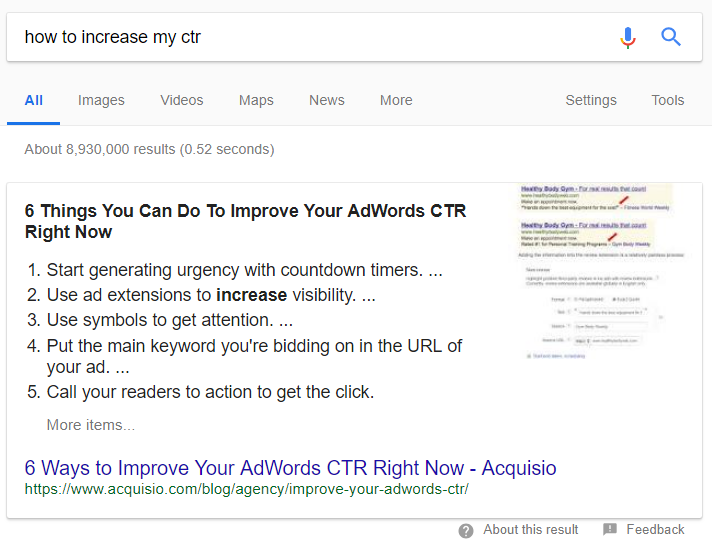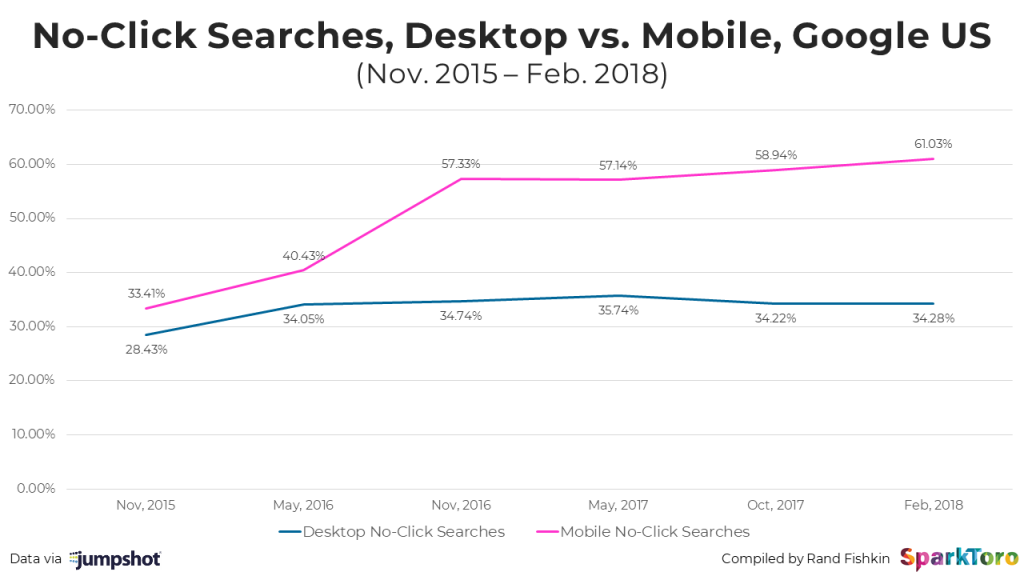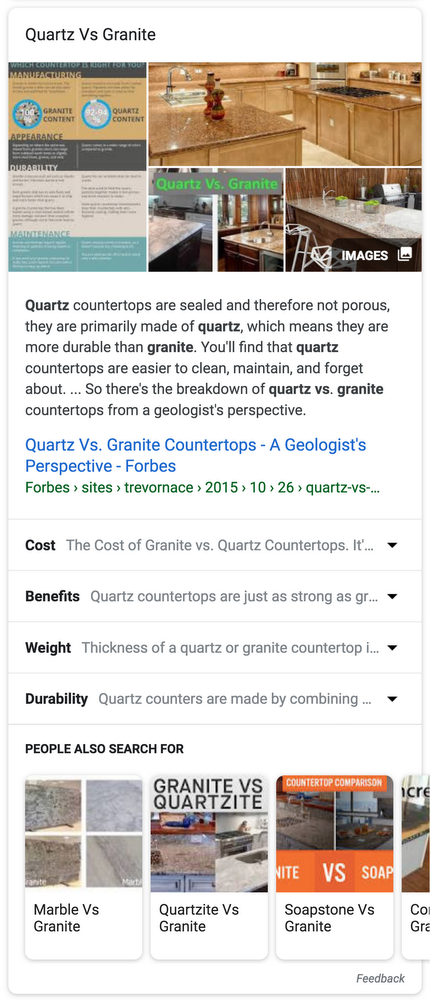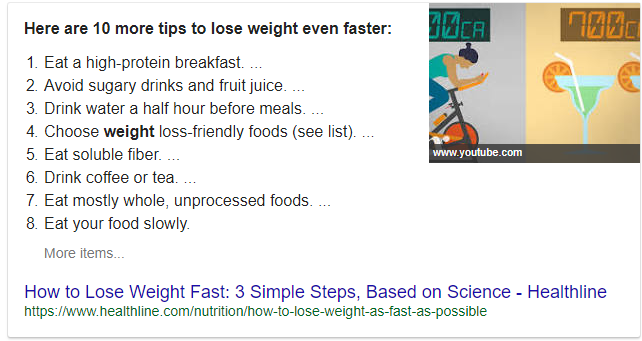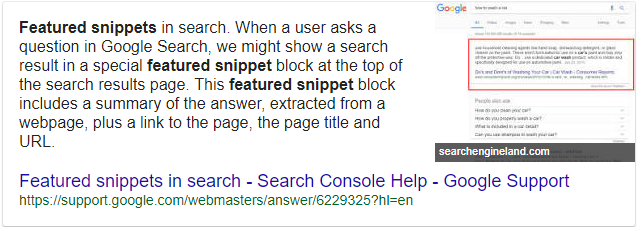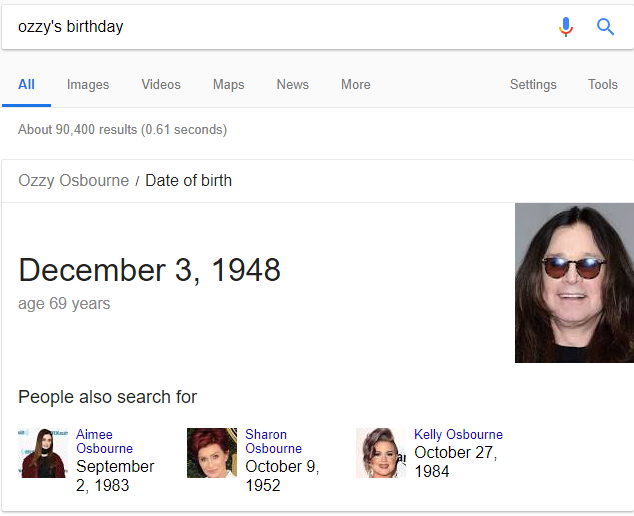No Click Through – No SEO: Why You May Not Survive The Future SEO Battle
23 August 2018 Leave a comment ALL-HANDS SEO
I won’t be chatting about how significantly SEO changed, how search used to work and how you may want to go back to the good old days. Why? Because nobody cares. Neither should you.
What we will talk about today is how search engines work now and what results they deliver to users. What strategies you should be concentrating on to, at least, compete on the market and be more nimble to outrank your competitors.
Click through rate is dying
Wait, what? An SEO expert from a neighboring SEO agency has told that we will improve your CTR and increase the level of conversions. Well, have a look yourself.
What an irony! Sorry mate, but Google has already shown me the answer. I don’t care much about your website. I haven’t found out about the 6th thing, but I’ll just assume that 5 pieces of advice will work for me. I’m busy today, and I need to win every millisecond to beat my own competitors. Cheers!
In a recent couple of years, CTR has dropped dramatically both on desktop and mobile platforms. In fact, on mobile the CTR is around 50% lesser than on desktop, according to Medium’s article. On the other hand, you can have a look at the graph below that shows the percentage of searches with absolutely zero clicks through.
Scary, isn’t it? What causes such an enormous decrease in click-through rate? You’re probably familiar with featured snippets, knowledge graphs and answer boxes.
Featured Snippets
A featured snippet is a brief piece of contact extracted from a website that shows an answer to a user query. A featured snippet usually appears at the top of Google search result pages. I have started the article with the featured snippet image, by the way. However, there is more to come.
In 2018, August 16, Google introduced an advanced featured snippet that has a lot more extra features than the regular snippet. The new snippet will be using comparison-based information about a product, material, etc., to show a comprehensive answer to a user query. It will save users a lot of time and clicks which is bad news for us, digital marketers, SEO experts and business owners.
You can see that the new snippet includes almost everything you need to know if you’re looking for the best materials for a kitchen, for example. There is no longer a need to look for cost, benefits, weight and durability and other variations of materials (people also search for) because everything you need to know is right in front of you.
There are several types of snippets that you want to rank for:
Snippets for location (local businesses, countries, regions, etc.). Check out our ultimate guide to local SEO to learn about the markup for Google Maps.
Regular answer snippets. The same as for local snippets you need to concentrate on the markup and the length of a snippet. We have taken 10 different “How to” and 10 “What is” queries to see the pattern between the snippets, e.g., their lengths (number of words, characters) and markups.
The 10 “How to” snippets had an average number of 293 characters or 47.25 words. The longest snippet was an 8-number list with 320 symbols or 48 words while the shortest snippet had 270 symbols and 39 words.
At first, you may think that the answer for “How to lose weight fast” was just a simple bulleted or numbered list like the one you create in your Google Docs or Microsoft Word or any other text editor that supports markup. Well, it wasn’t that simple.
Every number that you see in the short snippet was either H2, H3 or H4 headers and a whole paragraph was written to cover the key point.
The 10 “What is” snippets had an average number of 298.75 symbols or 51.25 words. The longest snippet had 316 characters and 58 words.
For the “what is” query I googled “What is a featured snippet” as you can see I’ve got some answer to my question which seems to be extracted directly from Google’s support answers. It may appear that a snippet itself has poor logic. However, if we go to the website, we will see that “Featured snippets in search” is a title and then the direct answer follows.
Just like “How to” queries “What is” ones were also structured with H2, H3 or H4 headers to determine the beginning of the answer to a user query.
The verdict: to rank for a featured snippet you need to create H2-H4 headers and then write some decent paragraph to answer the topic, if you’re writing a “What is” type of answer. For a “How-to” answer you’ll have to repeat the procedure (smash another H-number sub-title and enlarge it with some good piece of info). One thing that was common is that you need to have your content structured in the Q&A (question-answer) format.
Apart from it, writing a solid, relevant meta description and including the keywords in the answer may have a positive effect on your ranking for a featured snippet.
Knowledge graphs
Here is a knowledge graph for a knowledge graph definition. But what it actually is?
What is a knowledge graph?
A knowledge graph is a large network of entities, objects or things that are presented by Google in a brief, informative answer to a user query. A knowledge graph describes existing characteristics, features or timelines of an entity, object or thing.
For example, here is what a mushroom looks like, in case you didn’t know.
The main difference between a knowledge graph and a featured snippet is that a knowledge graph gets automatically updated with new relevant information once it’s available on the web. Google extracts this information from different sources to complement the existing knowledge graph.
The answer engine is playing quite a witty game in extracting info from different websites and putting it on their website sometimes not even giving any credits to the source of info such as it’s happening with an answer box.
How do you optimize for a knowledge graph?
However, a knowledge graph can significantly help you build your business identity and branding on the web. How do you optimize for it? There is a Google step-by-step guide to getting listed in a knowledge graph.
Answer box
We have already covered featured snippets and knowledge graphs but what about answer box? What is an answer box?
An answer box is a SERP feature that shows a direct short answer to a user query sometimes even if a user has not completed typing their question.
There is another variation of this answer box which is when a search has been completed.
This is the worst search feature for your SEO and brand identity because the answers shown may have been extracted from your website but weren’t given any credit to. It’s bad news. However, you can only live with it; you can’t really change it. Not that answer boxes are killing your SEO, however, they may be a little bit frustrating for website owners.
Rank Ranger has done a really good job describing all of the search features that you can possibly find on the web. Even though they are our direct competitors, hats off to them for writing such a concise and comprehensive list of SERP features. You can check it out if you want to know more about those features.
Where does the massive decrease in CTR come from?
It comes from the small-screen friends – smartphones. As the era of mobiles has started, and more and more users are using mobile devices rather than desktops, Google has made some changes to the search process. This is why there was panic about optimizing for AMP pages, voice search and everything.
Anyway, the real issue for Google is to lay out tones of information that appear on the web every minute. And not only just randomly throwing facts and other pieces of info but to organize the data and present it in the best way possible (quickly, fancy and comprehensively). This is where knowledge graphs and answer boxes and other SERP features appeared.
They have been first tested on mobile platforms and then relocated to the desktop devices. This is another reason why mobile devices are prioritized and come first. The proof of it is that Google actually will rank your mobile website faster than desktop. What do I mean by that?
The content that you serve to mobile users has greater potential to rank number one especially if you have set up proper mobile optimization such as responsive design, mobile-friendly URLs, images, content, AMP pages, etc.
Even though the answer engine era may be a little bit depressing, everything is not that bad. With the new changes the new opportunities will always come, and you may be the first one to catch those opportunities. If you’re looking for the ways to develop your business, the doors will constantly be opening, you’ll just have to walk in.
Things are not that horrible for business owners
Featured snippets may, indeed, be destructive to the CTR, however they can also be quite helpful depending on the goal that you pursue.
There are two things that will cheer you up:
- If you’re running a website and your main goal is to communicate the message to your audience (mostly readers rather than active buyers), then Google helps you with that by creating those snippets. Making it to the zero search result (featured snippet) is the best way to make people remember your website and show them that you don’t care much about anything but helping people and educating them. In this case, you are very likely to succeed.
- If you’re selling products, then you do not really care about most part of featured snippets. When people are looking for a product to purchase they are interested in buying it rather than reading about it, right?. However, there is a chance to make your business a bit more successful. If you get listed in a featured snippet with an embedded video (such as product review, product comparison, etc.), then you can catch a customer’s attention and engage them with your product.
If you still really care about increasing your CTR than you can check out the article “How to increase your CTR using schema.org”
Tags: answer engine, ctr, featured snippets
Like this article? There’s more where that came from.
- 5 Questions to Ask Yourself Before Paying for Rank Tracking Software
- 5 Serious Mistakes Beginner SEOs Make and How to Fix Them
- Why We Use Google’s New Link Attributes and You Should Too
- Title and Description in 2021: Why Google Rewrites SEOs’ Meta Tags
- What We Should Learn From Google’s “About This Result” Feature

